
Emanuel Gottlieb Leutze was a German-born American history painter best known for his 1851 painting Washington Crossing the Delaware. He is associated with the Düsseldorf school of painting.

John Brown was a prominent leader in the American abolitionist movement in the decades preceding the Civil War. First reaching national prominence in the 1850s for his radical abolitionism and fighting in Bleeding Kansas, Brown was captured, tried, and executed by the Commonwealth of Virginia for a raid and incitement of a slave rebellion at Harpers Ferry in 1859.

Winslow Homer was an American landscape painter and illustrator, best known for his marine subjects. He is considered one of the foremost painters of 19th-century America and a preeminent figure in American art in general.
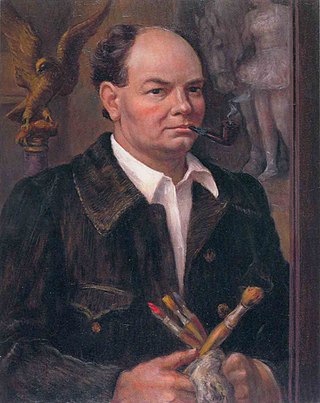
John Steuart Curry was an American painter whose career spanned the years from 1924 until his death. He was noted for his paintings depicting rural life in his home state, Kansas. Along with Thomas Hart Benton and Grant Wood, he was hailed as one of the three great painters of American Regionalism of the first half of the twentieth century. Curry's artistic production was varied, including paintings, book illustrations, prints, and posters.

Mary Ann Day Brown was the second wife of abolitionist John Brown, leader of a raid on Harpers Ferry, Virginia, which attempted to start a campaign of liberating enslaved people in the South. Married at age 17, Mary raised 5 stepchildren and an additional 13 children born during her marriage. She supported her husband's activities by managing the family farm while he was away, which he often was. Mary and her husband helped enslaved Africans escape slavery via the Underground Railroad. The couple lived in Pennsylvania, Ohio, and in the abolitionist settlement of North Elba, New York. After the execution of her husband, she became a California pioneer.

Thomas Hovenden was an Irish artist and teacher who spent much of his life in the United States. He painted realistic quiet family scenes and narrative subjects and often depicted African Americans.

James Miller McKim was an American Presbyterian minister and abolitionist. He was the father of the architect Charles Follen McKim.
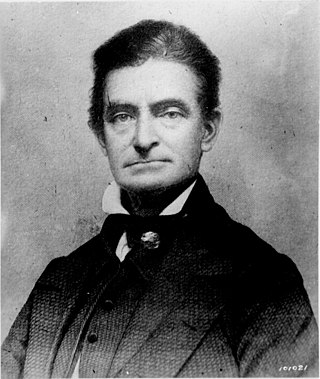
Virginia v. John Brown was a criminal trial held in Charles Town, Virginia, in October 1859. The abolitionist John Brown was quickly prosecuted for treason against the Commonwealth of Virginia, murder, and inciting a slave insurrection, all part of his raid on the United States federal arsenal at Harpers Ferry, Virginia. He was found guilty of all charges, sentenced to death, and was executed by hanging on December 2. He was the first person executed for treason in the United States.
It was in many respects a most remarkable trial. Capital cases have been exceedingly few in the history of our country where trial and conviction have followed so quickly upon the commission of the offense. Within a fortnight from the time when Brown had struck what he believed to be a righteous blow against what he felt to be the greatest sin of the age he was a condemned felon, with only thirty days between his life and the hangman's noose.

Robert Seldon Duncanson was a 19th-century American landscapist of European and African ancestry. Inspired by famous American landscape artists like Thomas Cole, Duncanson created renowned landscape paintings and is considered a second generation Hudson River School artist. Duncanson spent the majority of his career in Cincinnati, Ohio and helped develop the Ohio River Valley landscape tradition. As a free black man in antebellum America, Duncanson engaged the abolitionist community in America and England to support and promote his work. Duncanson is considered the first African-American artist to be internationally known. He operated in the cultural circles of Cincinnati, Detroit, Montreal, and London. The primary art historical debate centered on Duncanson concerns the role that contemporary racial issues played in his work. Some art historians, like Joseph D. Ketner, believe that Duncanson used racial metaphors in his artwork, while others, like Margaret Rose Vendryes, discourage viewers from approaching his art with a racialized perspective.
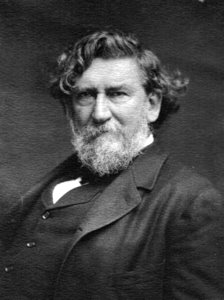
Thomas Satterwhite Noble was an American painter as well as the first head of the McMicken School of Design in Cincinnati, Ohio.

John Anthony Copeland Jr. was born free in Raleigh, North Carolina, one of the eight children born to John Copeland Sr. and his wife Delilah Evans, free mulattos, who married in Raleigh in 1831. Delilah was born free, while John was manumitted in the will of his master. In 1843 the family moved north, to the abolitionist center of Oberlin, Ohio, where he later attended Oberlin College's preparatory division. He was a highly visible leader in the successful Oberlin-Wellington Rescue of 1858, for which he was indicted but not tried. Copeland joined John Brown's raid on Harpers Ferry; other than Brown himself, he was the only member of John Brown's raiders that was at all well known. He was captured, and a marshal from Ohio came to Charles Town to serve him with the indictment. He was indicted a second time, for murder and conspiracy to incite slaves to rebellion. He was found guilty and was hanged on December 16, 1859. There were 1,600 spectators. His family tried but failed to recover his body, which was taken by medical students for dissection, and the bones discarded.

Shields Green, who also referred to himself as "'Emperor"', was, according to Frederick Douglass, an escaped slave from Charleston, South Carolina, and a leader in John Brown's raid on Harpers Ferry, in October 1859. He had lived for almost two years in the house of Douglass, in Rochester, New York, and Douglass introduced him there to Brown.

John Brown's raid on Harpers Ferry was an effort by abolitionist John Brown, from October 16 to 18, 1859, to initiate a slave revolt in Southern states by taking over the United States arsenal at Harpers Ferry, Virginia. It has been called the dress rehearsal for, or tragic prelude to, the Civil War.
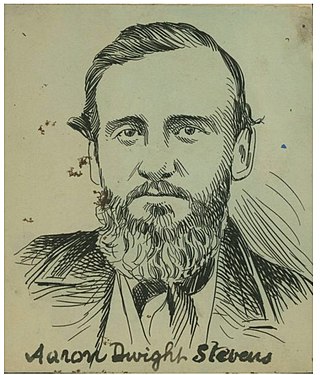
Aaron Dwight Stevens was an American abolitionist. The only one of John Brown's raiders with military experience, he was the chief military aide to Brown during his failed raid on the federal arsenal in Harpers Ferry, Virginia. For his role in the raid, Stevens was executed on March 16, 1860. He was 29.

The Hovenden House, Barn and Abolition Hall is a group of historic buildings which are located in Plymouth Meeting, Whitemarsh Township, Montgomery County, Pennsylvania. In the decades prior to the American Civil War, this property served as an important station on the Underground Railroad. Abolition Hall was built to be a meeting place for abolitionists, and later was the studio of artist Thomas Hovenden.
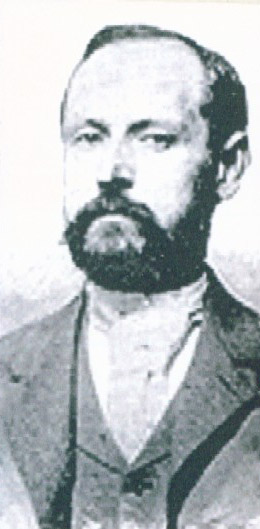
Hugh Bolton Jones was an American landscape painter. He grew up in Baltimore, Maryland, where he received his early training as an artist. While studying in New York he was strongly influenced by Frederic Edwin Church of the Hudson River School. After spending four years in Europe he settled in New York in 1881, where he shared a studio with his brother Francis Coates Jones for the rest of his long life. He was celebrated for his realistic depictions of calm rural scenes of the eastern United States at different times of the year, usually empty of people. He won prizes in several major exhibitions in the US and France. His paintings are held in public collections such as the Metropolitan Museum of Art and the Smithsonian Institution.
On Sunday night, October 16, 1859, the abolitionist John Brown led a band of 22 in a raid on the federal arsenal at Harpers Ferry, Virginia.
The Winchester Medical College (WMC) building, located at 302 W. Boscawen Street, Winchester, Virginia, along with all its records, equipment, museum, and library, was burned on May 16, 1862, by Union troops occupying the city. This was "retaliation for the dissection of cadavers from John Brown's Raid". More specifically, it was in retaliation for the desecration they discovered of one of those cadavers, the body of one of John Brown's sons, identified years later as Watson. The body of John Brown's son, fighting against slavery in the raid on Harpers Ferry, had been dishonored: made into an anatomical specimen in the College's museum, with the label "Thus always with Abolitionists". In addition, students at the school collected and then dissected the bodies of three other members of Brown's troop and a black boy was apparently tortured and killed there for favoring the Union.
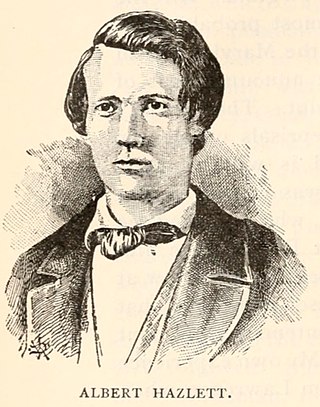
Albert Hazlett was a participant in John Brown's raid on Harpers Ferry and was executed on March 15, 1860, in Charles Town, Virginia, now in West Virginia for the crime.

















